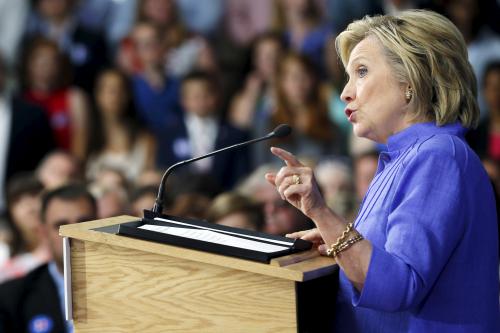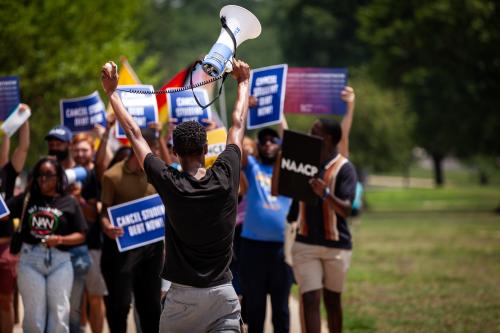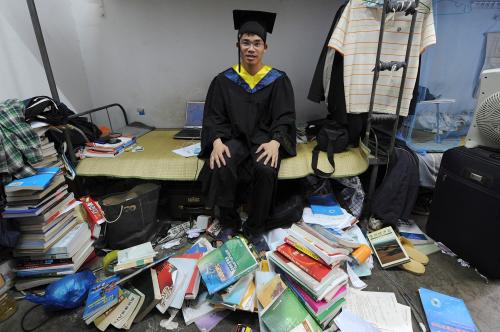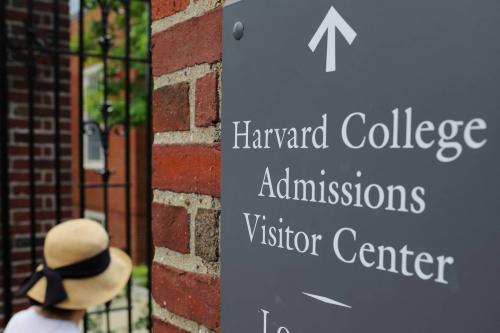College students and parents, in response to the COVID-19 pandemic disrupting the college experience, have been pushing for tuition discounts. After Princeton University announced a 10% across-the-board tuition discount to all its students earlier this summer, Williams College, Georgetown University, and others have followed.
But, at most schools without significant endowments, tuition discounts may reduce the availability of financial aid in the future for those who need it.
Most students need help beyond family resources to pay for college. In the 2017-18 academic year, 86% of first-time undergraduates at four-year institutions obtained aid.
For example, if annual tuition is $50,000, the university will calculate what each student’s family can pay and then attempt to make up the difference with aid. A student from a family earning $100,000 a year might be deemed able to contribute $10,000 a year toward tuition. At colleges with enough resources, the remaining $40,000 will be subsidized through grants and federal work-study. At many schools, however, the financial aid package also includes federal student loans or even loans to be taken out by parents.
If a university suddenly reduces tuition by 10% to $45,000 a year, in theory the student might still be expected to contribute $10,000; financial aid could simply cover $35,000 instead of $40,000. Nothing may change at all for the needy student if the cuts are to need-based grants, instead of loans. Recognizing this concern, some schools have applied the tuition discount to a family’s expected financial contribution. For example, The Catholic University of America has instituted a 10% discount on the difference between the tuition sticker price and each student’s scholarships and grants from the university.
Given the economic ramifications of the COVID-19 shutdowns, it might seem justifiable to slash tuition by 10% or more, but it will backfire. With well-off families paying less, college will have less revenue to redistribute as aid in the future to those who are financially struggling.
Many universities are already projecting deficits of tens to hundreds of millions of dollars because their costs have not gone down. In fact, they are spending millions more in attempting to make campuses safe through buying COVID-19 tests, reconfiguring classrooms for social distancing, paying for technology for hybrid and remote classes, etc. This new, temporary reality is less pleasant for students; it is as well for faculty and staff. But it is not costing the university less. In addition, some schools are borrowing funds and cutting non-financial aid budgets to redistribute the savings to increased financial aid for students whose families suffered job losses.
If costs are going up and revenue is decreasing, money available for financial aid will likely go down—not this year, but in the future, when the bill for debt taken on now comes due and when unsustainable cuts are reversed. For example, Johns Hopkins University is offering a tuition discount, but it has also suspended retirement contributions for most employees. If a school with billions in endowment like Johns Hopkins has taken such aggressive steps with benefit reductions, how will the many schools that are not need-blind in their admissions process resist taking more students from wealthy backgrounds and fewer from financially struggling families in future years?
Although we don’t usually think of it this way, the redistribution of tuition dollars through financial aid is a noble service that many universities provide to their neediest students. We were all born into circumstances that we could not dictate; the eve of adulthood is not the time to demand that those who lost the economic lottery at birth shoulder the same cost as the winners.
Setting aside merit scholarships, everyone not paying full tuition has been asked to pay as much as the federal government has calculated they reasonably can, through information gathered from the Free Application for Federal Student Aid (FAFSA). Often that is still too much, and families take on additional loans, choose less-expensive schools, or skip college altogether. Those paying sticker price are not being financially stretched to the same degree. Indeed, their families could pay more, but they don’t have to because the university puts a ceiling on tuition.
Now this artificial upper limit may seem high to those of us who are not millionaires, but there are more than 8.3 million households in the United States with over $1 million in investable assets (which doesn’t include the value of their house or employer-sponsored retirement plans). Such households are, in effect, already getting a tuition discount because colleges never stretch their purses up to their limit.
It might sound shocking to ask a family to pay $200,000 in annual tuition, but is it so preposterous if their annual income is $2 million? Scandinavians don’t think so. Of course, since college is effectively free there, we have to turn to speeding tickets to find an example. In Finland, fines for exceeding the speeding limit are based on one’s income. Individuals have received speeding tickets in excess of $100,000. That levels the disincentive effect of traffic tickets.
This is why in past years some have argued that the best way to make college more affordable to students from families that are financially struggling is to increase tuition so that the added revenue could be used to increase financial aid. By reducing tuition, non-elite schools run the risk of doing the exact opposite—making college less affordable for the financially least well-off students in the long run.
In part, this is why some schools have actually increased tuition for this upcoming year, which has enabled them to increase financial aid at an even greater rate. For example, Syracuse University is increasing tuition by 3.9%, which has allowed it to increase financial aid by 7%. In these difficult times, tuition discounts don’t make sense unless one’s aim is to lower educational quality through further squeezing university budgets and hurting the least well-off students in the process.
Universities are doing as much as they can to help struggling families right now. At my university, like so many others, the president, provost, and many in academic leadership have made substantial voluntary contributions to assistance funds to support students and staff. The dean of my law school has donated $125,000 from her personal funds to help students in need.
Instead of cutting tuition, what can universities do to help low-income students during the pandemic?
First, colleges should expand understanding about federal aid. Billions in aid goes unclaimed every year because 40% of students don’t complete the FAFSA. State aid and private scholarships are also often left on the table.
Second, colleges and universities need to more widely publicize what students from different economic quintiles actually pay to attend once aid is calculated. Potential applicants are too often scared off by the sticker price.
Third, alumni should be asked to further step up. I teach at a public university, where I have been amazed by the generosity of our graduates. Alumni donated over $300 million annually for the past few years—more money than the university gets from Pennsylvania, which was one of six states to have cut funding per student by over 30% after the Great Recession. Such loyalty binds generations and is what makes social mobility possible.
Many of us would welcome a more affordable system of higher education, or one that did not charge tuition at all. Yet absent Scandinavian-style government subsidies, colleges developed a system of tuition redistribution that attempts to be more fair. Tuition discounts during this pandemic could wreck that, putting higher education further out of reach for some students and lowering the quality for those who remain.






Commentary
Tuition discounts don’t make sense, increased funding for financial aid does
August 24, 2020